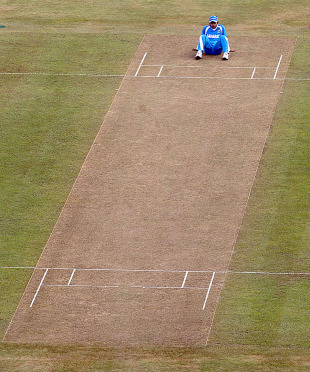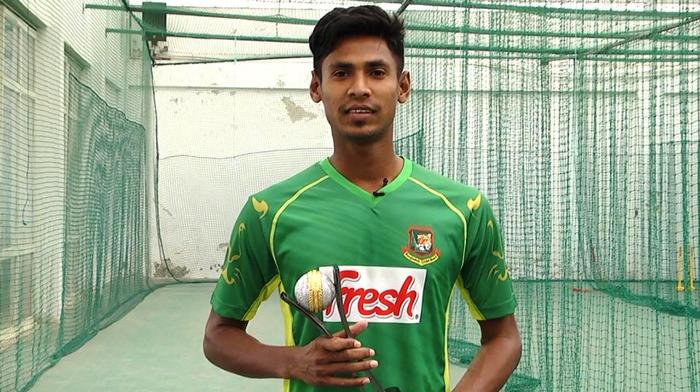
|
|||
|
|
|||
The performance in Sri Lanka is a significant stepping stone for Bangladesh and its impact should be felt in the near future
In a few years from now, Bangladesh’s tour of Sri Lanka in 2013 may be forgotten as one comprising just another routine set of games. It had a 1-0 win in the Test series for the much-stronger hosts, a rain-affected 1-1 ODI series result, and a solitary Twenty20 fixture before the IPL. However, for the Bangladesh team, this tour has been a major shot in the arm, and its impact will be felt in a few years’ time.
The drawn Test in Galle and the come-from-behind ODI win in Pallekele stick out, as do captain Mushfiqur Rahim‘s double-century, Mohammad Ashraful‘s long-awaited return to runs, Nasir Hossain‘s growing confidence, and the lacklustre pace bowling. The team’s performance and the development of individual players have been the primary concerns of Bangladesh cricket; in that regard, this is an unprecedented accomplishment as it all came together in the backyard of a superior opponent.
Apart from the results, it has been remarkable how certain areas that went unnoticed even during successes at home have surfaced here and become contributing factors to the team’s impressive performance. The first among them has been how the leadership injected belief into a team that was without its best all-round cricketer for the entire tour, and partly without its best batsman and senior-most bowler. Imagine Sri Lanka without Kumar Sangakkara for the whole series, and Rangana Herath for parts of it, and it will give you a fair idea of the personnel missing for the Bangladesh side.
Mushfiqur’s management skills and personality were both put to the test over the 32 days in Sri Lanka. He has dispelled notions of any fragility and has show that even without scoring runs he can be the driving force in the team. It represents a big change from what Mushfiqur was perceived as when he took over as captain. His deputy Mahmudullah and head coach Shane Jurgensen, too, helped him
Mahmudullah didn’t have a great series, personally, but he has had an influence over how the team has fared. The lack of runs didn’t force him into a shell, as his bowling has shown. He has been the quietest player in the team so far as media interactions go, but, in Galle and Colombo, one could hear him shout the loudest from the dressing room balcony whenever a bit of cheering was required. Jurgensen has worked quietly behind the scenes, leading the support staff and keeping the younger players honest to the cause. He has been hands-on, and has given the players enough space to think for themselves.
Ashraful reshaped his batting on his own, as much as Nasir has grown more confident each time he steps out to bat. Two batsmen born in different decades have taken key positions in the line-up and provided a glimpse of what the future holds, and what processes to avoid. Ashraful should have adopted a tighter approach years back. Nasir, on the other hand, has done himself no harm by not complicating matters. His pre-batting routines, attitude towards certain situations in long and short-form cricket, should be lapped up by younger players.
Among those who stick by Nasir often is Mominul Haque, a junior to Nasir from their Bangladesh Institute of Sports days. Mominul is a presence that a shot-happy batting line-up needs to find balance. His ability to rotate strike from early stages in his innings has won him a place in the senior side, and it is good news for the team that he has been able to repeat that in Tests.
Anamul Haque’s tour has been a contrast to Mominul’s. Anamul decided to play Test cricket in the traditional fashion, only to have a poor game in Galle . It was his first real slide in the last 12 months, during which he has scored centuries at every level including ODIs. He has to quickly realise that playing his natural game, while being more alert, is a better approach.
Jahurul Islam, too, had to do well in this series and there were moments when he looked comfortable with Test cricket. But, often, he gave it away after making a start, which should sting him and motivate him to do better next time.
Sohag Gazi, too, had a relatively quiet, given the pressure on his shoulders ahead of the tour. He showed patches of brilliance, but there was too much asked of him in only his second international series, and his first tour with the senior side. He has a lot of bowling to do; letting him blend in slowly would be the best way forward.
Robiul Islam and Abul Hasan have emerged as two out of four pace bowlers who could somewhat hold their heads high. Both showed hunger despite their limitations in skill. Robiul, a domestic-circuit stalwart by Bangladesh standards, has several technical areas to work on but he is one who has to be given a longer run. So should Abul, who can bowl quick but often fades away after one good spell.
Apart from Sohag, none of the bowlers appeared to be up to Test standards. Shahadat Hossain’s fitness is a major concern while Rubel Hossain looks like a bowler who has to be left to his own devices from time to time, to generate more self-belief.
This tour has given Bangladesh plenty to cheer, and must be remembered for being one where they remained competitors through its entire duration. But it shouldn’t be a lasting memory necessarily; it was, after all, only a stepping stone for what, Bangladesh must hope, will be more memorable success in the future. As an indication of how well Bangladesh can perform when on tour against a better team, these 32 days have served a strong example.
Spource: espn cricinfo









